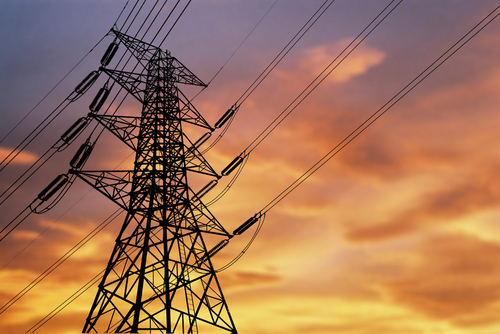Negative outcomes for rate cases impact utilities’ capital costs, says report

Rate case filings and subsequent negative rate case decisions made by states affect the returns on utilities’ stocks and bonds and increase their cost of capital, according to a recently released report from Sector & Sovereign Research (SSR).
“I would say that the most important takeaway is that utilities are not just pushing their own interests when they say that negative rate case outcomes increase their cost of capital,” Eric Selmon, co-head of SSR’s Utilities and Renewables Research, told Daily Energy Insider. “The track record of the state regulators impacts the cost of equity when utilities file rate cases. When rate cases are decided, we found that lower allowed ROEs increase the cost of debt.”
Selmon, along with SSR colleague Hugh Wynne, wrote “Rates Cases Impact Utility Stock and Bond Returns and Utilities’ Cost of Capital — but Not Necessarily as Expected,” published on July 31.
In their report, the co-authors analyzed 368 different rate cases filed by U.S. investor-owned electric utilities over the period 2012-2022 to assess how the filings and rate case decisions affected returns on utilities’ stocks and bonds.
In each rate case, they tracked the performance of the filing utility’s stocks and bonds in the months following both its filing and the final decision in the rate case, and then compared the returns to those of all other publicly traded electric utility stocks and bonds over the same period, according to the report.
The report found that over the 12 months following the filing of a rate case, the equity performance of a filing utility tended to reflect investors’ expectations of its regulators’ decision. In contrast, the announcement of rate case decisions had no discernible impact on subsequent equity performance, the report says.
The impacts were reversed for bonds.
“Over the 12 months following the filing of utility rate cases, the bond yields of utilities filing rate cases differed little from those that did not; over the 12 months following rate case decisions, however, bond yields increased markedly for those utilities awarded the lowest ROEs,” wrote Selmon and Wynne at SSR.
They pointed out that the post-filing equity performance of electric utilities usually reflects the track record of the state in which the case was filed in reducing utilities’ requested revenue increases, with the stocks of utilities filing in states with a record of large cuts to revenue requests materially underperforming those of their peers.
“Over the 12 months following the filing of rate cases in such states, we estimate the cost of equity of the filing utilities increased by ~15 to ~20 basis points,” they wrote. “We found a similar effect among the bonds of utilities awarded the lowest ROEs in their rate cases: over the 12 months following the rate case decision, these bonds suffered an increase in their spreads to Treasuries of ~12 to ~19 basis points relative to the bonds of utilities receiving more favorable ROEs.”
Regarding implications for utilities’ cost of capital, the report says that the equity performance of U.S. electric utilities following the announcement of rate case decisions “appears to be relatively insensitive to the content of those decisions” — whether measured by the reduction in the utility’s requested revenue increase relative to the historical average reduction in utilities’ requested revenue increases in the state where the rate case was filed, or to the ratio of the allowed ROE granted the utility to the national average of the allowed ROEs granted in all electric utility rate cases in that year.
“This suggests to us that by the end of a rate case sufficient information has been released (in the form of staff recommendations, draft decisions by administrative law judges and the like) to allow investors to estimate the outcome with considerable accuracy, thereby limiting the information of the decision itself,” according to the report. “It is difficult, therefore, to use the post-decision equity performance of electric utilities to estimate the impact of adverse or supportive regulatory decisions on utilities’ cost of capital.”
On the other hand, wrote the authors, they found that the equity performance of electric utilities following the filing of rate cases seemed to align more closely with the expected outcome of the case, with equity returns lowest for utilities filing in states with a historical track record of large cuts to utilities’ requests for revenue increases.
“Importantly,” Selmon told Daily Energy Insider, “within the hundreds of rate cases we analyzed for this analysis there were a few dozen rate cases where the impacts were even larger and we plan to do a more detailed analysis of those rate cases to better understand what differentiated them.”
“Regarding those rate cases,” he added, “we still have a lot of work to do, but these are rate cases where the cost of debt increases by 30-150 basis points following the rate case decisions, reflecting real concerns about cash flows and credit metrics among bondholders.”
“We would like to understand why these rate case decisions were viewed by bondholders as being so negative,” said Selmon.
